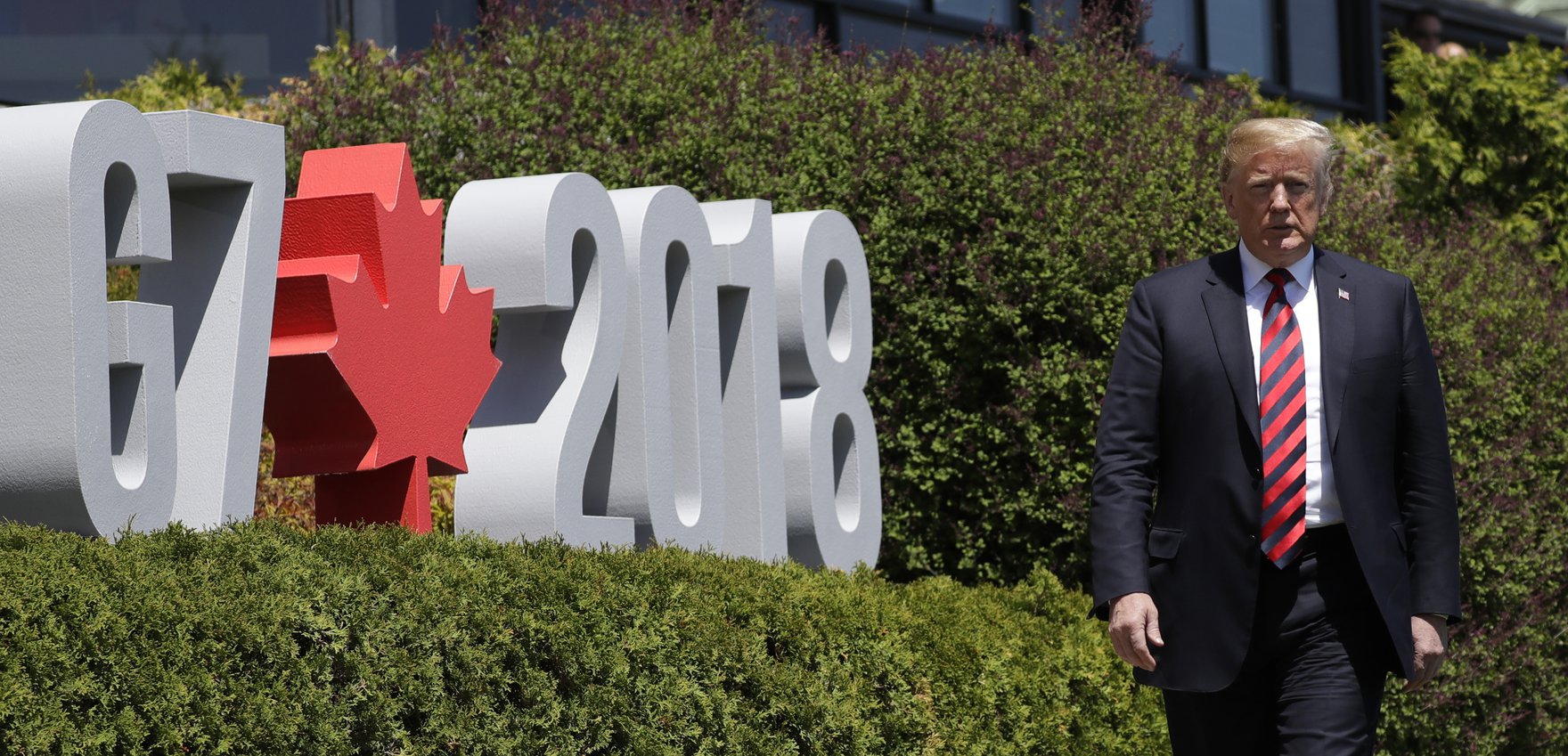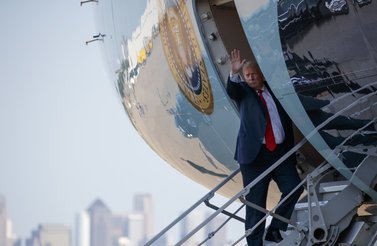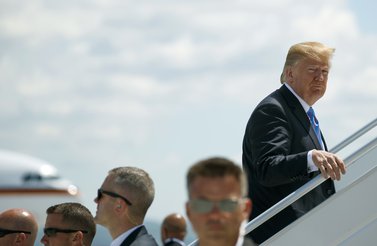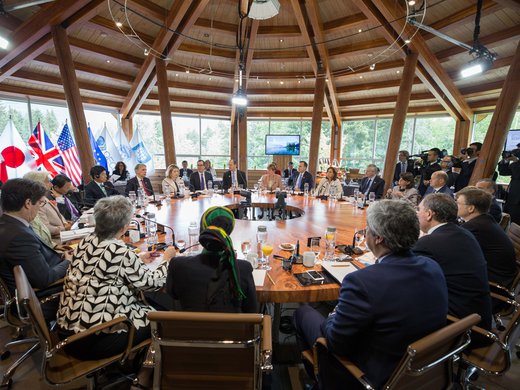In the short space of half a century, the United States passed from being one of a number of great powers to one of two superpowers, to the sole hyperpower. As its position in the world changed, so, too, did its foreign policy behaviour.
A similar transition can also be perceived in US international economic policy. This is consistent with the subordinate role of international economic policy relative to foreign policy in the United States; as Robert Zoellick, a former US trade representative, wrote, “Ever since the rise of ‘national security’ as a concept at the start of the Cold War, economics has become the unappreciated subordinate of U.S. foreign policy.”
Seen through this lens, US trade policy under President Donald Trump’s administration is not evidence of new behaviour but an extension of the now long-practised US hyperpower behaviour into the international economic policy space.
Geopolitics and Geoeconomics in the Postwar Era
As the United States moved from great power to superpower to hyperpower, the international framework it preferred and promoted shifted from multilateralism, to one of exclusive clubs, to one of no clubs at all.
At the end of the second world war, the United States was one of several “great powers” and saw itself that way. The elements of the institutional architecture for the postwar world — which included, in particular, the United Nations and the Bretton Woods institutions (the International Monetary Fund [IMF] and the World Bank) — were conceived with an internationalist world view. They were intended to provide multilateral, inclusive governance frameworks. As Zoellick put it: “The economic internationalists of the Bretton Woods system and the European Economic Community were not driven primarily by a plan for ‘containment’ or to counter the Soviet Union. That came later.”
Even in this early period, American influence was decisive in framing the intended multilateral system. This is best illustrated in the negotiations leading to the establishment of the IMF. The key figures were an otherwise obscure US Treasury official, Harry Dexter White, and Britain’s John Maynard Keynes, easily the most famous and brilliant economist of his age. They did not see eye-to-eye on the strength of the international institutions. CIGI Senior Fellow James M. Boughton quotes economic historian Charles Kindleberger’s recollection that White, the US Treasury official at the time, was “determined to make the British turn their pockets inside out.” Whose views were decisive? The IMF that emerged from Bretton Woods reflected US preferences on issues wherever Keynes and White differed.
Very rapidly, US thinkers adjusted their conceptual frameworks to reflect the actual power relationships of the postwar world. With Britain’s empire collapsing under the weight of its dire fiscal situation and the European continent in need of massive US support to recover, the Western Europeans were great powers in name only; in truth, they were second-tier powers with little capacity to project force internationally. That left the United States and the Soviet Union as the remaining great powers, now sufficiently dominant to be dubbed “superpowers.”
The new superpower-based ordering framework was in place as early as April 1947, just three years after Bretton Woods. It was based on American charge d’affaires George Kennan’s “long telegram,” which described the Soviet Union as “a political force committed fanatically to the belief that with US there can be no permanent modus vivendi[,] that it is desirable and necessary that the internal harmony of our society be disrupted, our traditional way of life be destroyed, the international authority of our state be broken...” The Truman Doctrine was born of this conceptualization; it cast the United States as the leader of the free world with a duty to support free peoples against the predations of totalitarian regimes that undermine international peace and US security.
The completion of the remaining internationalist project launched by the United States when it was in great power mode — the International Trade Organization — was quietly shelved; instead, the General Agreement on Tariffs and Trade, signed seven months after the Truman Doctrine was enunciated, emerged as the first Cold War international instrument, expressly excluding the communist bloc. Moreover, the Marshall Plan displaced the multilateral World Bank as the prime instrument to support European recovery, with the intent of having Europe serve as a bulwark against Soviet expansionism. The United States also proceeded to rapidly displace the former European great powers in their hegemonic capacities. In particular, the US took over from Britain in the Islamic crescent and from France in Indochina, setting up the subsequent cold war proxy confrontations with the Soviets and China. The multilateral era was already over in reality – but not in rhetoric: the term “multilateral” continued in use to describe the institutions of the anti-communist bloc, typically in a context in which commentators acknowledged, actively beseeched, and frequently expressed concerns about possible lapsing of “US leadership.”
With the fall of the Berlin Wall and the subsequent collapse of the Soviet Union, the United States became the sole hyperpower. The reality of this new status was rapidly absorbed into American thinking, as evidenced early and controversially in the so-called “Wolfowitz indiscretion”— contained in the leaked initial draft of the Defense Planning Guidance for 1991 — which, in Andrew Bacevich’s catchy characterization, stated, “We’re number one. We won the Cold War. There is only one superpower. This is a circumstance which is not only agreeable, but the perpetuation of this circumstance ought to be the central thrust of U.S. foreign policy from this day onward.”
While this articulation was walked back before the document was officially released, within a decade it was openly adopted as official American doctrine, when President George W. Bush made his famous pre-emptive use-of-power speech. There is a suggestive parallel between the Kennan-Truman and Bush Doctrines, as brought out by Ivo H. Daalder and James M. Lindsay: “George W. Bush has launched a revolution in American foreign policy. He has redefined how America engages the world, shedding the constraints that friends, allies, and international institutions impose on its freedom of action. He has insisted that an America unbound is a more secure America.” This statement fits Trump trade policy like a well-tailored suit. In a nutshell, Trump trade policy:
- Seeks to redefine how America engages the world economically, rejecting regional trade agreements and binding commitments, in favour of one-on-one “deals” in which it has the whip hand;
- asserts national security to unilaterally reorder US trade relations;
- treats economic relations in the same win-lose framework as geopolitics; and
- openly uses threat of massive escalation to cause “friends” and “allies” (does a hyperpower need either?) to make uncompensated commercial concessions (as in the North American Free Trade Agreement renegotiation).
How a Hyperpower Handles Trade
The multilateral framework and the various “clubs” such as the Group of Seven (G7) that provide the venue for international economic policy coordination were called into being during an era when the United States was a lesser power. Arguably, a hyperpower would have little interest in such groups or institutions in which its voice or vote is equal to that of others. They would be tolerated at best, while the preferred mode would be bilateral relations, complemented by ad hoc coalitions where convenient. This is consistent with President Trump’s expressed preferences: figuratively, as in ancient imperial fashion, foreign leaders would be summoned to the White House, bend the knee, kiss the ring, deliver the tribute, and take instructions for next year.
The Trump administration has not yet put forward anything resembling a cogent theory of trade relations to guide its hyperpower-style trade policy. The administration’s risible focus on bilateral trade balances, dissemination of (literally) trumped-up trade facts, and imposition of tariffs on production inputs that damage its own industries leave trade policy professionals in the United States and elsewhere at a loss. This void has created uncertainty for business — but, compounding the problem, business uncertainty is not considered a negative factor by the administration. Rather it is being deliberately stoked to deter imports.
The Trump uncertainty effect is not yet reflected in the trade numbers. To date, business has been steadied by tax cuts and tweeted assurances to “stay cool” and let things work themselves out. In the meantime, massive fiscal stimulus at a mature stage of the business cycle has kept the economy buoyant. Yet, private sector investment is being slowed as firms wait for more information before committing capital. Moreover, interest rates have started to rise, and a debt-swollen global economy is teetering on the brink of yet another financial crisis (the usual canary in the international financial crisis coal mine — Argentina — has already had recourse to the IMF, and interest rates are not yet into positive territory in real terms). The overall situation can only be described as precarious.
Response of the Rest: Locking the Shields
From the perspective of everyone else, coordination appears to be the key to an effective response. US economic weight is substantially less than its military weight. In a competitive global economy, supply chains can be rearranged, and pressure on specific weaknesses can trigger investments to correct them. The countries most exposed to bilateral pressure tactics — Canada and Mexico — have a web of trade agreements with Europe and Asia to support diversification, not to mention the advantage of powerful constituencies within the United States that depend heavily on trade with Canada and Mexico to deter excessive use of pressure tactics.
In short, the costs imposed by US protectionism might be manageable, especially if the response is coordinated — an appropriate image is the “locking of the shields” in the movie Gladiator, a tactic that enables the gladiators to collectively triumph in the re-enactment of the destruction of Carthage, despite being individually at a disadvantage. That was fiction; in real life, coordination is much harder, and therein lies the rub for the rest — the gladiators had a Maximus, a skilled and charismatic leader. Who, in today’s fractured global setting, could play that role?
So far there have been answers. When the United States pulled out of the Trans-Pacific Partnership, Japan’s Prime Minister Abe slid quietly into the driver’s seat and the deal was closed. Following Trump’s post-G7 summit attacks on Canadian Prime Minister Trudeau, German Chancellor Merkel featured prominently in rallying the G6.
However, divide and conquer tactics could easily splinter any concerted response because the rest of the world is not a natural set of like-minded parties. For example, the European Union and Japan met with the United States to consider a coordinated approach targeting China’s industrial policies at the WTO. For its part, China appeared ready to write a mega-billion cheque to settle accounts, although anything that China would have given preferentially to appease Trump would, by the very same token, have eroded the benefits of the multilateral trading system for third parties triggering frictions with them.
Concluding thoughts
The next shoes are about to drop, so to speak: retaliation against US steel and aluminum tariffs, punitive tariffs on $50 billion of US imports from China, possible countermeasures from China, possible punitive tariffs on US auto imports — the list goes on.
An improbable trade war, which by conventional reasoning has no plausible war aims and hence no reasonable conclusion, is about to break out as a result of the United States’ use of hyperpower tactics in trade. This calls for a fundamental rethinking of US trade policy, and an appropriate response by US trade partners is urgently warranted.





